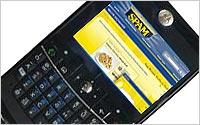Social Spam Rose 355% In The First Half Of 2013
- by Laurie Sullivan @lauriesullivan, September 26, 2013
 Social spam in Facebook, YouTube, Google+, Twitter and other sites grew 355% during the first six months in 2013 -- but only 15% contain a URL, making it easier to trick fans and followers.
Social spam in Facebook, YouTube, Google+, Twitter and other sites grew 355% during the first six months in 2013 -- but only 15% contain a URL, making it easier to trick fans and followers.
In fact, one in 200 social media messages contain spam leading to adult content and malware. The trend could damage a brand's good name and turn followers into foes, reports
Nexgate.
Nexgate's team of data scientists analyzed more than 60 million pieces of unique social content published on more than 25 million social accounts. The 2013 State of Social Spam report found that Facebook contains the highest number of phishing attacks and personally identifiable information, more than four times that of the other social media networks.
Spammers have caught on to Facebook's targeting features. The report calls out Facebook's Graph Search as one of the newest spam tools for social because it allows users to precisely query a specific target audience. Spammers set parameters such as age, location, likes, interests and brands followed. Aside from being seen by the indented person and friends, all connected friends of friends also see the message. If the recipient's content is public, social spam reaches an even wider audience. Some 40% of social media accounts have been used to cast a wide net.
Social media apps have become an easy target. At least 5% contain spam. Amazingly, the rate of spam continues to grow faster than the rate of comments on branded social media accounts, per the report.
Social media has led to several new ways of delivering spam, such as in spammy apps called "like-jacking" social bots, and fake accounts. Some 20% of spammy apps are found on a brand-owned social media account. These apps offer to perform special tasks outside of social networks. The visitor "likes" something rather than clicks on a malicious link. It tricks people into clicking on images that appear as a harmless button.
YouTube contains the highest amount of risky content, or content containing profanity, threats, hates speech and insults. For every one piece of risky content found on other social media networks, there are five pieces of risky content on YouTube, according to the Nexgate report.


